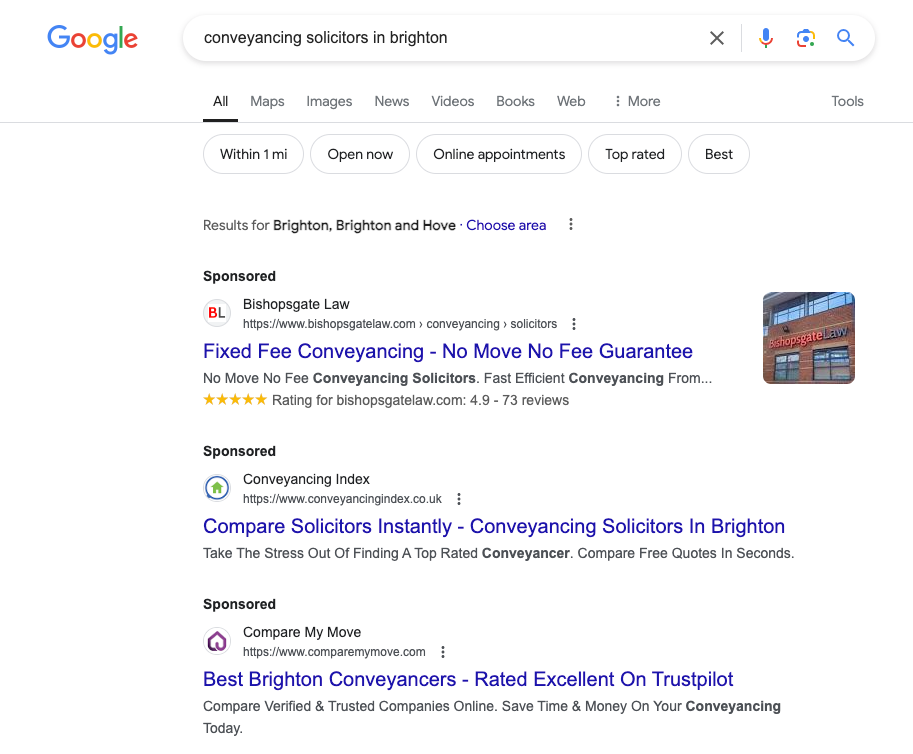
Mastering Marketing for your Small Business
Part Two: Email Marketing and PPC Ads
Building on our previous post covering local SEO, link building and social media, this post delves into more critical areas of marketing for small businesses: email marketing and PPC (Pay-Per-Click) advertising. These tactics, when executed effectively, can significantly enhance your business’ online visibility, attract new customers and increase sales.
By tailoring marketing efforts to the specific needs of your target audience, you can optimise your digital marketing strategy to foster growth and success. Dive in to explore these powerful approaches and get a greater return on your marketing spend.
Email Marketing: Engage and Convert
Building a Valuable Email List
Before you can target prospects via email, you need the contact details for those prospects, and building an email list should be high up your priority list in order to maximise potential future growth. The best time to start building your email list was before you even started your business. The second best time is now.
Whilst buying email databases is one way to quickly build a list of contacts, this can be fraught with difficulties due to strict data protection laws and the abundance of low quality data. Therefore building your own email list is recommended as a more sustainable, organic route to success.
In order to build your list you’ll want to set up lead magnets for data capture. The idea is to encourage users to want to share their details with you, because doing so would offer value to them.
Start by offering compelling incentives to potential customers; this can be in the form of discounts, free resources or exclusive content. Ensure that your signup forms are easily accessible on your website, social media platforms and even in your physical premises if applicable. Asking for minimal information initially can increase signup rates, (nobody wants to take more than a few seconds filling in a form) but consider segmenting your list later based on customer preferences or behaviours, even if you make certain fields non-essential, giving prospects the choice of whether they want to give you more information you can make use of.
Additionally, utilise double opt-in methods to ensure that your subscribers are genuinely interested. This not only improves the quality of your email list but also helps in complying with GDPR regulations. You should also regularly clean your email list by removing inactive subscribers to maintain high engagement rates. There are many tools available to help you build and manage your email list and some of the most popular are Hubspot, Mailchimp and Brevo. All of these providers offer a free plan so you can get to grips with how they work and then if you find one you like and want to make further use of it you can choose to upgrade to get more form the service.

Crafting Compelling Email Content
Naturally, the nature of your content is going to be crucial for engaging your audience and driving conversions. First up you’ll need a captivating subject line that grabs attention and entices recipients to open the email. Personalisation is key here; if you can use the recipient’s name and tailor the content to their preferences or past interactions with your business you can expect a far higher rate of engagement.
Keep the body of the email concise and focused. Use clear, action-oriented language and include a strong call-to-action (CTA) that directs the reader towards the desired action, whether it’s making a purchase, signing up for an event or downloading a resource. Producing guides, research and whitepapers that are only accessible to email subscribers are an ideal way to attract interest and get those contacts for your database.
Visual elements, such as images and videos, will also enhance the appeal of your emails. Make sure these elements are optimised for both desktop and mobile devices to ensure a seamless user experience, though most modern email management tools should have this covered for you. Lastly, always test different versions of your emails through A/B testing to identify what resonates best with your audience and refine your strategy accordingly. The more your email list grows the more opportunity you’ll have to experiment through testing different messaging and then using that data to optimise your future emails.
Automating Your Campaigns
We’ve talked before about the power of automation to shave time off your daily and weekly tasks (see our post on essential software tools for SMEs) and automation of your email marketing campaigns is a real no-brainer in order to save time and ensure consistency in your communication efforts. Most modern email management tools, such as those we’ve mentioned above, will offer automation features, though the depth of their offering will depend on the plan you’re using. Essentially these platforms allow you to set up workflows that trigger emails based on specific actions taken by your subscribers, such as signing up for a newsletter or abandoning a shopping cart.
Automation enables you to send timely and relevant messages without manual intervention. For instance, you can create a welcome series for new subscribers, nurture leads with educational content or re-engage inactive customers with special offers and promotions. Once again, if you can personalise these with dynamic content such as the recipient’s name or recent purchase history, you increase your chances of getting those clicks.
Be sure to regularly review and optimise your automated workflows to ensure they are performing effectively. It’s not just about keeping your brand in people’s minds, but about improving customer retention to ultimately drive more sales. Once you start digging in to the nuances of email marketing and see just how much customisation is possible down to the most granular levels, you might wonder how you ever managed without it!

PPC: Maximising Paid Search Potential
Selecting Effective Keywords
Pay-per-click ads on search engines have the advantage of pushing your products or services to users who are already actively seeking them and this is why selecting effective keywords is fundamental to the success of your PPC campaigns. You’ll want to start by conducting thorough keyword research using tools like Google Keyword Planner and Ubersuggest (both of which are free) or if you’re really looking to ramp up your marketing efforts you might want to consider a paid platform such as SEMrush or Ahrefs.
Focus on finding keywords that are relevant to your business, have a decent search volume and, ideally, low to moderate competition. Long-tail keywords, which are more specific and less competitive, can be particularly effective for local businesses aiming to attract targeted traffic. For example, the search phrase Solicitors is incredibly broad, and competitive, whereas Conveyancing Solicitors in Brighton is going to have a much lower search volume, but those searching for this term are far more likely to be after the specific service, meaning a higher likelihood of converting.
Consider the intent behind each keyword too. Are potential customers looking for information, ready to make a purchase or comparing options? Align your keywords with the different stages of the customer journey to ensure your ads address their needs effectively. If you’re focused on sales then make sure you’re looking at keywords with commercial intent. There are different elements to search intent which you can learn more about here.
Regularly review your keyword performance and adjust your bids (the amount you’re prepared to pay per click for a given search term) accordingly. Remove underperforming keywords and experiment with new ones that show potential. Maximising your ad spend to increase click-through rates and drive more qualified traffic to your website is an ongoing process and requires a lot of trial and error in order to determine what will be most effective. This is one of the reasons that engaging a PPC specialist can be beneficial, leveraging their own experience working on similar campaigns (ideally within your sector) to hit the ground running.
Creating Persuasive Ad Copy
In order to capture the attention of potential customers and drive clicks you’ve got to be persuasive. The best ads feature a strong headline that includes your primary keyword and clearly communicates the value proposition. Your headline should be compelling enough to make users want to learn more.
In the body of the ad, focus on the benefits of your product or service rather than just the features. Use clear, concise language and include a call-to-action that encourages users to take the next step, depending on your goal (e.g. make a purchase, submit an enquiry or sign up for a newsletter etc.)
Incorporate social proof where you can, such as customer testimonials, reviews or ratings, to build trust and credibility. Google makes it easy to pull in your star rating from your Google Business profile but will also let you bring in data form platforms like Feefo and Trustpilot if you collect ratings there. Most other search engines do the same, although non-Google market share is so low your budget is almost always better spent with the big G. Additionally, make use of ad extensions to provide additional information, such as your location, contact details, pricing or special offers, which can make your ad more appealing and informative.
Again, you’re going to want to constantly test different versions of your ad copy to identify what resonates best with your audience. Regular refinement and optimisation will help improve your click-through rates and overall campaign performance.

Tracking and Optimising Campaigns
In order to get the best return on investment you need to be on top of the data. You should ensure you’ve set up effective conversion tracking in your Google Ads or Bing Ads account to measure the effectiveness of your ads. This will help you understand which keywords, ad copies and landing pages are driving the most conversions.
Using Google Analytics and Search Console can also help you gain deeper insights into user behaviour on your site. Monitor key metrics such as click-through rate (CTR), cost per click (CPC) and conversion rate as well as keeping an eye on he organic keywords that bring visitors to your site. Regularly reviewing these metrics will help you identify areas that need improvement.
Optimisation should be an ongoing process. Adjust your bids based on performance, pause underperforming ads and allocate more budget to high-performing ones. Test different ad variations through A/B testing to see which versions yield the best results. There’s no such thing as “set and forget” in the world of PPC advertising so your campaigns really need constant analysis and evolution to be effective.
Hopefully this has given you some ideas on where to direct your marketing resources to get your brand in front of more people. Keep an eye out for our next post in the series which will look at more online advertising options including display ads and retargeting.
Call on 01273 917977 or complete our enquiry form
enquire book a viewing

